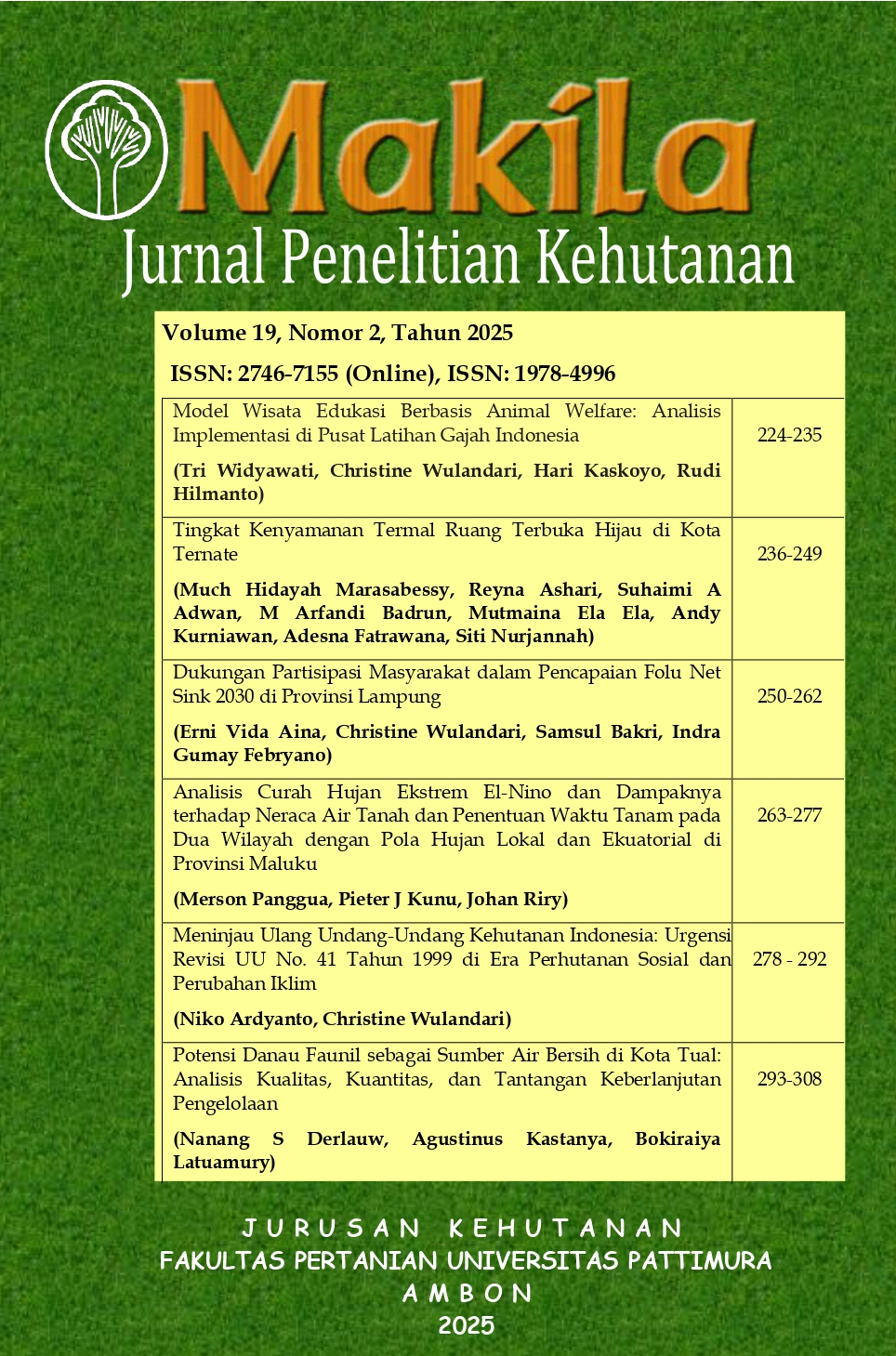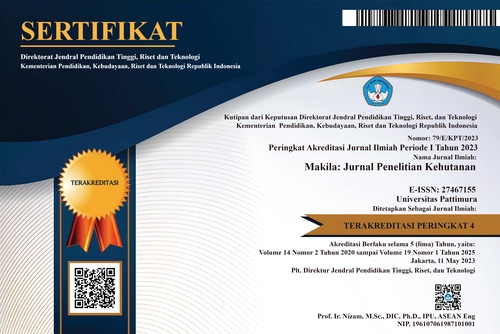Keterlibatan Pemangku Kepentingan dalam Perencanaan dan Pelaksanaan Pengelolaan Hutan Lindung Salahutu
Abstract
This study analyses stakeholder involvement in the planning and implementation phases of forest management within the Salahutu Protected Forest, Maluku Province. Employing a qualitative–descriptive approach, the research integrates policy document analysis, in-depth interviews, and stakeholder mapping to capture the perspectives of key institutional actors, including the Maluku Provincial Forestry Service, the Ambon Forest Management Unit (KPH), the Centre for Social Forestry and Environmental Partnership (BPSKL), the Watershed Management Agency (BPDAS), village governments, and local communities. The findings indicate that the Maluku Provincial Forestry Service and Ambon KPH function as dominant institutions with the highest regulatory authority and decision-making influence, while BPSKL, BPDAS, and village governments hold strategic yet constrained roles due to weak inter-sectoral coordination and institutional fragmentation. The study also reveals an imbalance between powerful stakeholders and forest-dependent communities, reflecting the absence of an inclusive and participatory governance framework. Discrepancies between provincial planning instruments—such as the Forestry Plan and the Long-Term Forest Management Plan (RPHJP)—and site-level implementation underscore coordination gaps and limited resource allocation. Analysis using the power–interest matrix highlights the need to strengthen local institutional capacity and harmonise spatial–sectoral policies. Conceptually, this research advances collaborative governance principles that position communities as co-management partners, recommending the establishment of multi-stakeholder forums and regulatory harmonisation to strengthen sustainable protected forest management.
Downloads
Copyright (c) 2025 Albert Ricardo Limahelu, Agustinus Kastanya, Patrich Ph. E. Papilaya

This work is licensed under a Creative Commons Attribution 4.0 International License.











